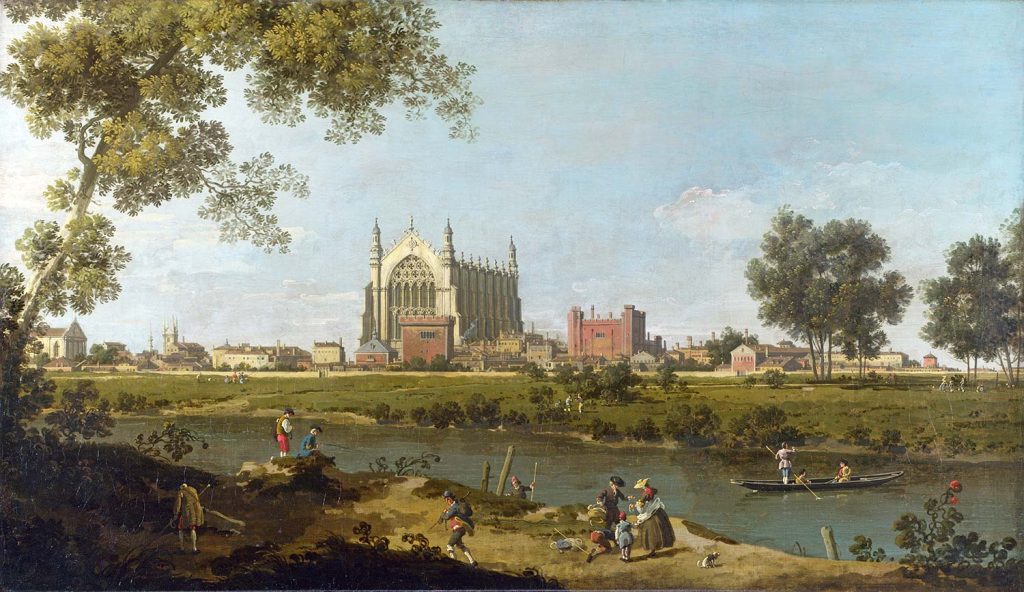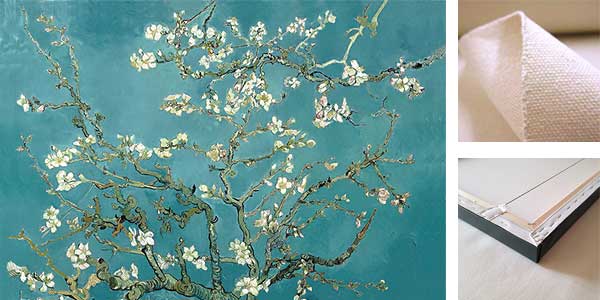
Eton College by Antonio Canaletto was created in 1754. The painting is in National Gallery, London. The size of the work is 61,6 x 107,7 cm and is made of oil on canvas.
About the Work
This view is from the bank of the River Thames, looking across a sprawling meadow towards Eton College on the horizon. Most of Canaletto’s English views overlook the Thames in the heart of London, in the same way that his most engaging Venetian scenes are never far from the Grand Canal. But here he has captured the river’s peaceful, meandering journey through the countryside.
A shady glade gives way to a softly lit river bank, with folk enjoying the fine summer’s day – away from the hustle and bustle of city life, they fish, boat and picnic. There’s a family group just in front of us, the smartly dressed man carrying a basket. They may have been brought up river by the boatman emerging over the riverbank and carrying an oar nearby. On the far side of the river, you can just make out groups of people out for a stroll.
The dominant building is the chapel, finished in 1482, and to its right the red-brick buildings of Eton College, a school founded by King Henry VI in 1440. There are a number of inaccuracies in the depiction of these buildings and many of those that surround them, which suggests the artist had little knowledge of the view. He perhaps relied on a sketch made on the spot at an earlier date, or an inaccurate drawing or engraving by someone else. Read more in National Gallery London
About the Artist
Giovanni Antonio Canal (18 October 1697 – 19 April 1768), commonly known as Canaletto), was an Italian painter from the Republic of Venice, considered an important member of the 18th-century Venetian school.
Painter of cityscapes or vedute, of Venice, Rome, and London, he also painted imaginary views (referred to as capricci), although the demarcation in his works between the real and the imaginary is never quite clearcut. He was further an important printmaker using the etching technique. In the period from 1746 to 1756, he worked in England, where he painted many views of London and other sites, including Warwick Castle and Alnwick Castle. He was highly successful in England, thanks to the British merchant and connoisseur Joseph “Consul” Smith, whose large collection of Canaletto’s works was sold to King George III in 1762. Read more in Wikipedia
Order a reproduction of this work (printed on canvas)
